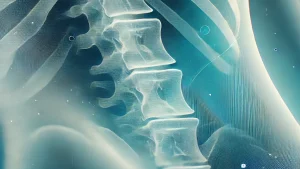X-Ray Tube
Where do X-rays come from?
What does the D/H ratio in comets tell us about the formation of the solar system? What are the origins of water on Earth? What is the difference between Oort cloud comets and Jupiter-family comets? These and other questions are answered by physicist Dr Paul Hartogh of Max Planck Institute of Solar System Research.
So if you go to the terrestrial planets – the situation is quite different. So the D/H ratio on the terrestrial planets in water is quite different from what we know from the outer planets. So, for instance, on Mars the value in the water is known, on the outer planets basically we do not know D/H ratio in water. And, on the other hand, on the terrestrial planets we do not know the D/H ratio in hydrogen, at least, not in the atmosphere. And so what we measure remotely, for instance, the D/H ratio in the water, but also may be on Mars, meteorites and so on. If you speak about Mars we have a D/H ratio, in meteorites, of about 300 ppm, but in the atmosphere it’s much higher than that. Maybe 2.5 times higher than that. The reason is escape of the atmosphere.
So the Mars atmosphere originally had much higher density. But with the time the atmosphere eroded, so to speak, that is believed, at least, it’s one of the theories meaning that the lighter elements escaped via thermal escape, and then the chance that a normal hydrogen atom escaped was higher than a deuterium atom. And so in that sense we’ve got an enrichment of deuterium which is five times of value we have on Earth. On Earth we have the value about 1.55 ppm that is what we measure everywhere in the water, which is called also the so called VCMOW for Vienna Standard Mean Ocean Water. And this is some kind of reference we are using for characterizing D/H ratio in other objects. Then if we go to Venus we have a huge enrichment, which depends on who is measuring that, the different methods to measure that ratio. Methods from satellites in the millimeter wave and the submillimeter wave in the UV, in the infrared. Mainly in infrared we get values which are enriched by the effect of 150-250 compared to Earth. So extremely high values.
Of course, this is a process that doesn’t tell us much about the formation of the solar system. Different, of course, is the situation if we investigate the material which is primordial. And primordial material is believed to be still present in comets, since comets come from the outer solar system where very little processing took place all the years. This material is called pristine, and therefore that’s very interesting to investigate the D/H ratio in comets.
So since then people tried to measure the D/H ratio in as many comets as possible. And, indeed, by ground-based observation, by telescopic observation it was possible to measure the D/H ratio in at least 5 different comets. For instance, the comet Hyakutake, the comet Hale-Bopp and few other comets which were very bright. But the problem is to measure D/H ratio from ground, from the Earth. You need a very bright comet with a high production rate of water vapor. We speak about, let’s say, something about at least 10-28 molecules per seconds, or about 300 kg of water vapor production per second. Maybe more. Hale-Bopp had basically even an effect of thousand or more. And if that is the case, that comet is extremely bright and we have extremely lots of water production, we have also the chance to measure the weak isotope like HDO.
So that was done by a couple of comets, but it was never possible to measure that in the Jupiter-family comet. The reason is that they have relatively short orbits. The Jupiter-family comets are short-period comets – maybe with the orbital period between 5 and 20 years. I think, Hale-Bopp had a couple of thousand years or Halley has about 80 years. So if comets have short-period orbits it means they are exposed to the Sun in general many, many times in relatively short timescales. It means they come near to the Sun, and then they lose lots of their volatiles, and therefore with the time they are less bright. In general, they are much smaller than the comets from the Oort cloud. So Oort cloud comets are far out and may be up to ten thousand astronomical units, while Jupiter-family comets go to only, as the name says, somewhere between the orbit of Jupiter and Saturn.
And so since that is the case the problem is to measure the D/H ratio in Jupiter-family comets. And we took the advantage of space telescope called Herschel space observatory, which had a high resolution instrument called Heterodyne instrument for the far-infrared. And this instrument is extremely sensitive specifically to water. I mean, the cometary spectra of water are extremely narrow and if you want to detect them you need extremely high spectral resolution, and HIFI had a spectral resolution of about 10 millions. And so at the same time it had detectors working at the quantum limit – it’s a physical limit. And then in space, so without the disturbing atmosphere in between, we were able to measure for the first time the D/H ratio in a Jupiter-family comet.
And that was planned from the beginning, so we were involved in this Herschel mission since early 90-s. We were involved in building instruments and so on. It was launched in 2009. And in 2010 we performed this observation of a Jupiter-family comet called 103P/Hartley 2. But maybe some people know Hartley 2 also from the EPOXI mission – there was an American spacecraft which made some nice photos and did a lot of investigations. Also in 2010 it was near perihelion and at this time we did an observation of HDO together with H216O or H218O. Why H216O and H218O? Because H216O is an optically thick line and if you want to determine a ratio you have to make sure that you see the same volume, the same amount of molecules, so to speak. And that requires that the lines are optically thin. Therefore we measured H218O/HDO and at the same time related it to H216O. But the main measurement was H218O to HDO. And from this observation we learnt that the D/H ratio in this specific Jupiter-family comet was telluric. That means the same that on Earth.
So we showed that this conclusion that comets couldn’t have brought water to Earth is not true, because at least we have found one who has exactly the same D/H ratio as what we find on Earth.
Anyway, it’s a very difficult measurement and with Herschel we’d been able to measure one more comet. And at this comet HDO was very weak, so we even didn’t detect it. We got an upper limit, which was not much above the D/H ratio measured in this comet Hartley 2. And, of course, for the future it would be very important. It’s very interesting to measure the D/H ratio in the lab in as large as possible samples of comets. And one more observation will be performed quite soon with the Rosetta mission –in situ determination of the D/H ratio, and then we have to look into the future – what is possible. One possibility may be the Atacama Large Millimeter Array. Then some observations may be possible on other submillimeter telescopes, like CCAT in the Atacama desert. Then there is a Russian experiment called ‘Millimetron’ which is extremely sensitive and with that it would be easy to measure a large number of Jupiter-family comets and determine the D/H ratio. So maybe there are some future in situ missions to comets, so some missions are discussed, but not selected yet. Anyway, it’s a very difficult measurement and I personally hope that at least the missions which are discussed now will also be realized and give us an opportunity to get a larger sample. Not only of D/H ratio in Jupiter-family comets, but also in Oort comets, because we just have five or six.
Of course, the D/H ratio is not the only criterion from which we can see whether water was delivered to Earth by comets. There are also other isotopic ratios which will be determined now with the Rosetta mission in 2014-2015. So the Nitrogen-15/Nitrogen -14 ratio has been determined also in a number of comets by ground-based observation, but mainly in HCN. Recently also in NH2, but the question is whether that is representative or whether most of nitrogen, for instance, is in the form of N2.
Another important aspect in this sense is the amount of organics in comets. Because usually deuterium is enriched even higher in organics than in water. And the Rosetta mission will provide all this kind of information – what is the D/H ratio in the comet; what is, maybe, the D/H ratio in the organics. What is the amount of organics relative to the ices and the silicates. So that means the Rosetta mission will really provide or will be a big step forward to learn more about this topic – whether comets brought water to Earth.

Where do X-rays come from?

Physicist Michele Dougherty on Cassini and Voyager missions and the possibility of life on Enceladus

Harvard Lecturer Ronald Walsworth on methods of exoplanets discovery, reference for spectral measurements, and...